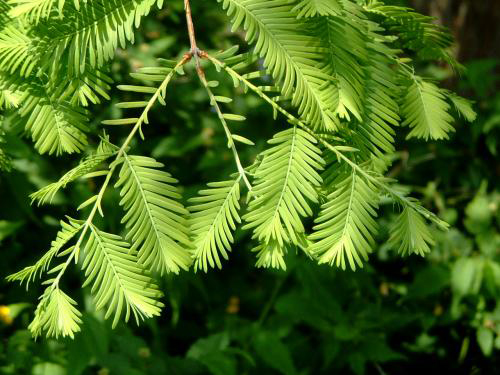- Homestay
- Qi Xin Xiaozhu culture originated
- Qí xīn xiǎo zhù
- Inhabiting
- Tourist
- Butler service
- specialty


Introduction: Metasequoia, deciduous trees, the only existing species of the genus Metasequoia, the precious species of Chinese specialties, the first batch of rare species of China's national first-class protected plants, known as the "living fossil" of the plant kingdom. It is now distributed in parts of the three counties of Lichuan, Shizhu and Longshan at the junction of Hubei, Chongqing and Hunan provinces.
Basic information: Metasequoia, Firaceae; Metasequoia; belongs to the plant kingdom; gymnosperm plant; first-class endangered plant; pine cedar; pine cedar; upper limit: 1500m.
Morphological characteristics: arbor, up to 35 meters, breast diameter up to 2.5 meters; the base of the trunk is often inflated; the bark is gray, taupe or dark gray, the young tree splits into thin slices, the large tree splits into strips, and the endothelium is pale purple brown; Oblique, branchlets drooping, saplings crowns towering, old tree crowns wide round, sparse foliage; annual branches smooth and hairless, green when young, then gradually turned into light brown, two or three years of branches pale brown or brown The lateral branchlets are pinnately arranged, 4-15 cm long, withered in winter; the winter buds on the main branches are oval or elliptical, apically apically, ca. 4 mm long, 3 mm in diameter, broadly ovate, apex Or blunt, the length and width are equal, about 2-2.5 mm, the edges are thin and light, and the back has longitudinal ridges. Leaf strip shape, length 0.8-3.5 (usually 1.3-2) cm, width 1-2.5 (usually 1.5-2) mm, light green on the top, lighter in the lower part, two lighter yellows along the midrib The stomata zone, each with 4-8 stomata lines, is arranged in two rows on the lateral twigs, pinnate, and falls off with the branches in winter. The cone is drooping, nearly quadrangular or rounded, spherical, green before ripening, dark brown when cooked, 1.8-2.5 cm long, 1.6-2.5 cm in diameter, 2-4 cm in length, with cross-overs on it. Strip-shaped leaves; stellate woody, scutellate, usually 11-12 pairs, cross-opposite, scaled flat-bowed, with a transverse groove in the center, base wedge-shaped, 7-9 mm high, 5-9 seeds capable of breeding scales Seed flat, obovate, interdigitate or oblong, surrounded by wings, apex concave, ca. 5 mm, ca. 4 mm; leaflets 2, strips, 1.1-1.3 cm long, 1.5-2 mm wide The two sides of the midrib are slightly bulged, with a stomata line on the top, and no stomata line on the bottom; the primary leaves are strip-shaped, intersecting oppositely, 1-1.8 cm long, with a stomata line below. At the end of February, the cones mature in November.